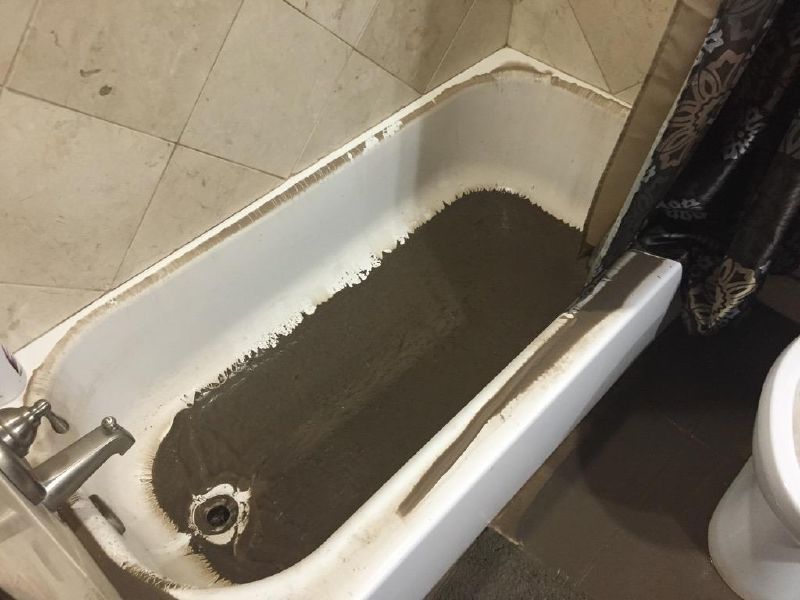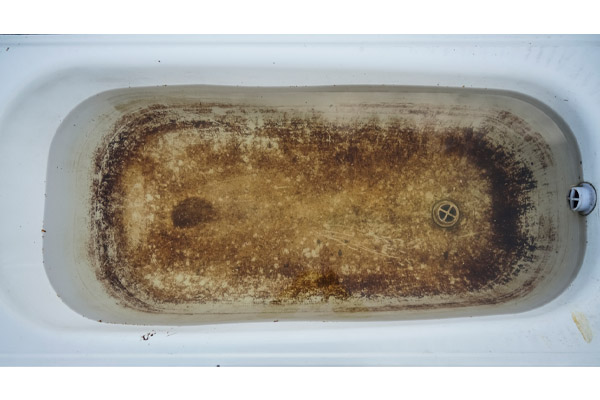Unpacking the Causes of Effluent in the Bathtub
Unpacking the Causes of Effluent in the Bathtub
Blog Article
This great article down below about What to Do if Sewage Starts Coming Up Through Your Bathtub is amazingly enlightening. Read it yourself and see what you think of it.

Sewage backup in the bathtub can be an upsetting and unhygienic issue for any type of home owner. Not only is it inconvenient, but it likewise presents severe health threats and shows underlying issues with the plumbing system. Understanding why sewage is showing up through the bath tub is essential for taking appropriate action to deal with the issue effectively.
Introduction to the Concern
Common Reasons for Sewer Backup
Blockages in the Sewage System Line
One of the most typical causes of sewage backup is a clog in the drain line. This can take place due to the accumulation of particles, oil, or foreign objects in the pipelines, protecting against correct circulation and causing sewer to support into your bathtub.
Tree Origin Invasion
Tree roots seeking moisture and nutrients can infiltrate sewer lines through small cracks or joints. With time, these origins can grow and increase, causing significant damages to the pipes and leading to sewage back-up concerns.
Comprehending the Trouble
When sewer starts backing up into the tub, it's a clear sign of a trouble with the drain system. The wastewater that needs to be streaming far from your home is rather finding its way back right into your space, which can result in substantial damage and carcinogen.
Prospective Causes
A number of elements can contribute to sewer backup in the bathtub. From blockages in the drain line to problems with the plumbing framework, determining the root cause is crucial for discovering a remedy.
Aging Framework
Older homes may have outdated plumbing systems that are much more vulnerable to rust, cracks, and damage. As pipes age, they end up being more susceptible to leaks and clogs, boosting the likelihood of sewage backup occurrences.
Heavy Rainfall or Flooding
Throughout durations of heavy rainfall or flooding, the sewer system might end up being overwhelmed with excess water, triggering backups and overflows. This can result in sewer supporting into tubs and other components inside the home.
Signs of Sewer Back-up
Foul Odors
Unpleasant odors rising from drains pipes or fixtures, especially in the bathroom, might suggest sewer back-up issues. These smells are usually strong and consistent, signaling an issue that requires immediate interest.
Slow Draining Fixtures
Tubs, sinks, and bathrooms that drain pipes gradually or not in all could be experiencing sewage backup. If several fixtures are affected concurrently, it's likely that the issue originates from an usual factor, such as the major drain line.
Gurgling Sounds
Odd gurgling or gurgling sounds originating from drains when water is running elsewhere in the house are a sign of air trapped in the plumbing system. This air build-up can result from sewage back-up and need to be examined without delay.
Health Risks Associated with Sewage Backup
Contamination of Water Supply
Sewer backup can contaminate the supply of water in your house, posing a significant health and wellness threat to you and your family members. Exposure to polluted water can lead to stomach concerns, skin infections, and other health problems.
Mold and mildew Development
Dampness from sewer backup can create suitable problems for mold and mildew development in your home. Mold spores can worsen breathing troubles and cause allergic reactions in delicate individuals, making timely clean-up essential.
Spread of Disease
Sewer contains damaging bacteria, infections, and bloodsuckers that can cause a variety of illness, consisting of hepatitis, cholera, and gastroenteritis. Entering into contact with sewer or contaminated surfaces puts you in jeopardy of infection.
Tidying up After Sewer Backup
Sanitation Procedures
Extensively disinfect and sanitize influenced locations after sewage back-up to eliminate damaging microorganisms and prevent mold and mildew development. Usage proper cleansing items and protective equipment to ensure risk-free and effective clean-up.
Reconstruction of Impacted Areas
Fix any type of damage to floor covering, walls, or fixtures brought on by sewer backup. Relying on the degree of the damages, you may require to change carpeting, drywall, or other materials to recover your home to its pre-loss condition.
Immediate Actions to Take
Turning Off Supply Of Water
In the event of sewage backup, it's important to turn off the water system to prevent additional contamination and damages. Situate the primary water shutoff valve in your house and closed it off till the concern can be dealt with.
Calling an Expert Plumber
Managing sewer backup is not a do it yourself job. Contact a licensed plumber with experience in taking care of sewage-related concerns to analyze the situation and perform essential fixings or cleanings.
Preventing Contact with Contaminated Water
Until the sewage backup is fixed, stay clear of contact with polluted water to stop the spread of germs and virus. Put on protective gear if you should remain in the affected location and clean your hands extensively later.
Preventive Measures
Routine Maintenance of Sewer Lines
Schedule routine evaluations and maintenance of your sewer lines to recognize and resolve prospective concerns prior to they intensify right into major problems. This can include cleaning out particles, examining for tree origin invasion, and repairing any kind of broken pipelines.
Installing Bayou Shutoffs
Consider mounting backwater valves in your plumbing system to avoid sewage from receding into your home throughout periods of heavy rainfall or flooding. These shutoffs instantly close when water draws back up, shielding your building from contamination.
Correct Disposal of Household Waste
Stay clear of flushing anything other than toilet tissue and human waste down the bathroom to stop clogs and clogs in the sewage system line. Dispose of oil, oil, and other home chemicals properly to minimize the threat of plumbing troubles.
Why Is Water Backing Up in My Bathtub When I Flush My Toilet?
What to do about a sewer line clog
First, don’t bother with plunging. No amount of plunging will dislodge the clog in a sewer line. The clog is too far away. Plungers are for clogs in the toilet itself, not the sewer line. Plus, the most likely causes of a sewer clog are:
Tree roots Flushed toys or feminine products Grease buildup Those items don’t move easily. And in the case of tree roots, the roots need to be cut out of the pipe and the pipe will need to be repaired.
You’ll need a closet auger. A closet auger is a type of plumber’s snake with a protective cover to keep from scratching the delicate porcelain toilet. If the clog is further down, you may need to remove the toilet or use one of your cleanouts to get to the clog.
We also recommend doing a video inspection of the drain to ensure that the cause of the clog has been completely removed. Otherwise, you could have the same problem again in a few days or weeks.
https://mspplumbingheatingair.com/blog/why-is-water-backing-up-in-my-bathtub-when-i-flush-my-toilet

As a reader about What To Do If Sewage Starts Backing Up Into the Shower, I was thinking sharing that excerpt was a great idea. Are you aware of someone else who is truly interested in Why is There Sewage Coming Up Through the Bathtub? Do not hesitate to promote it. Many thanks for your time. Kindly visit our site back soon.
Get A Quote
Report this page